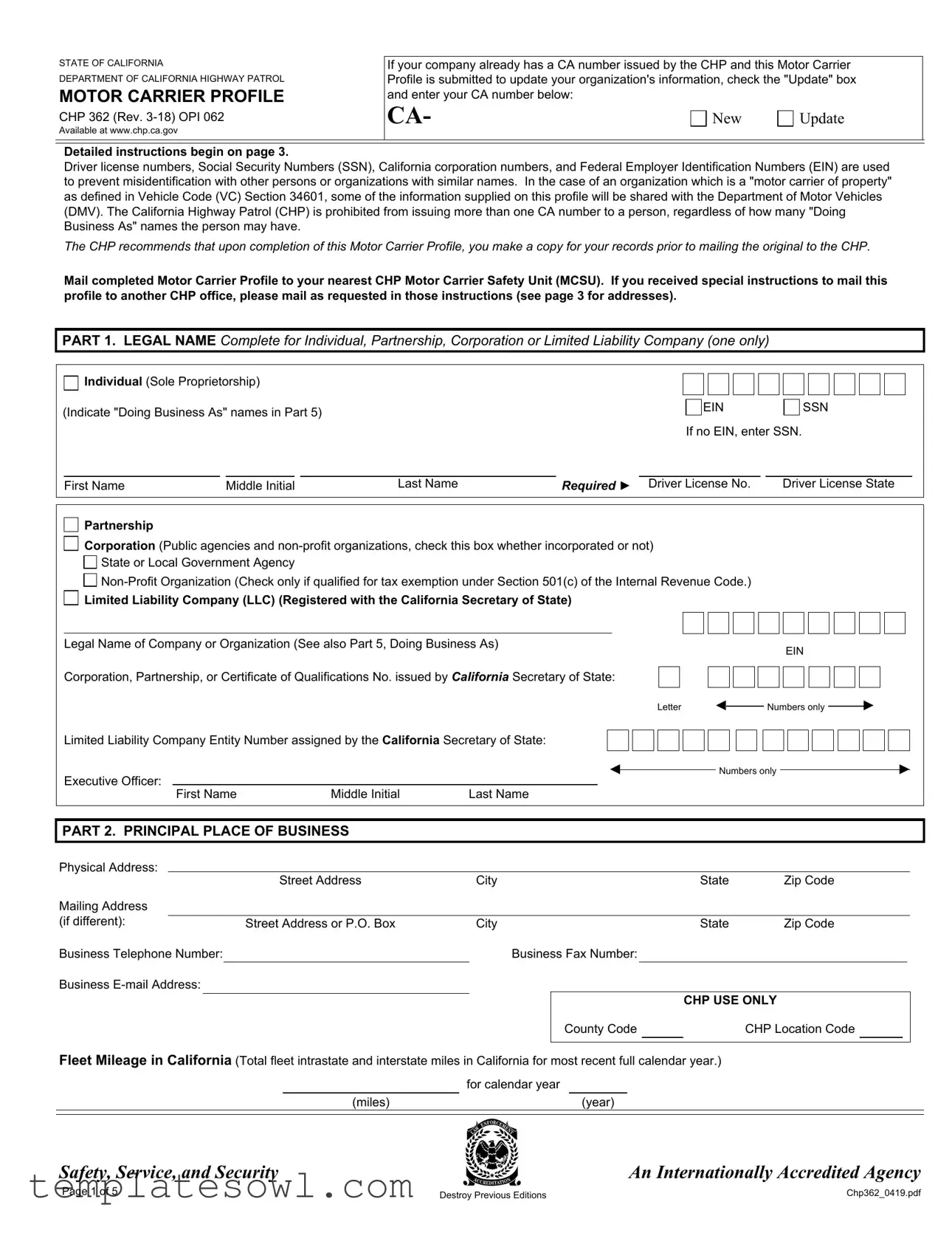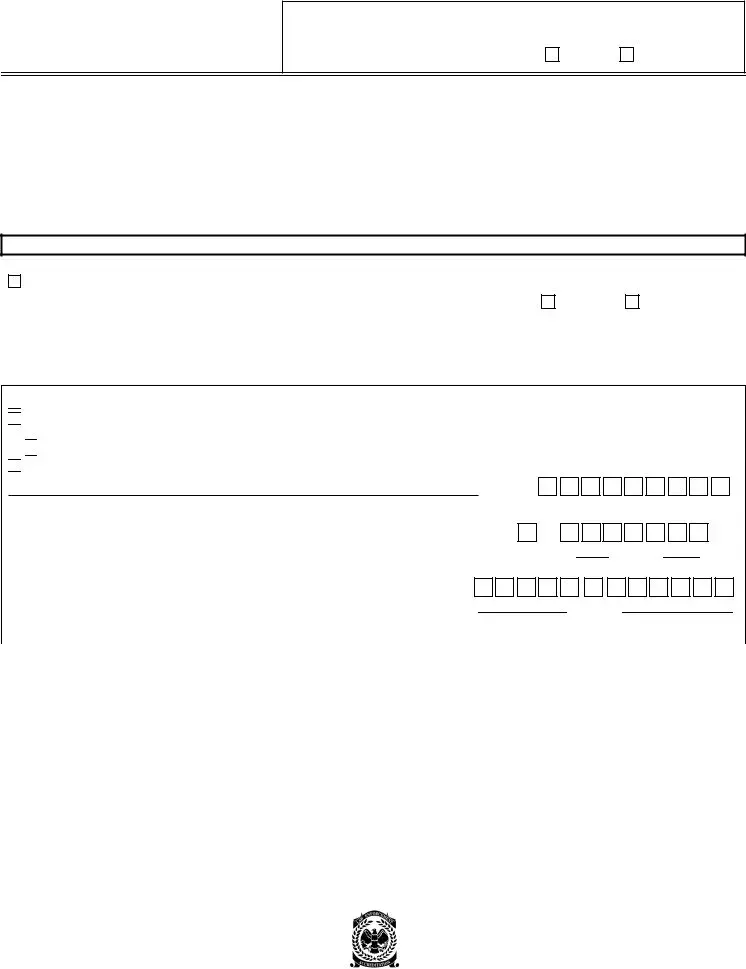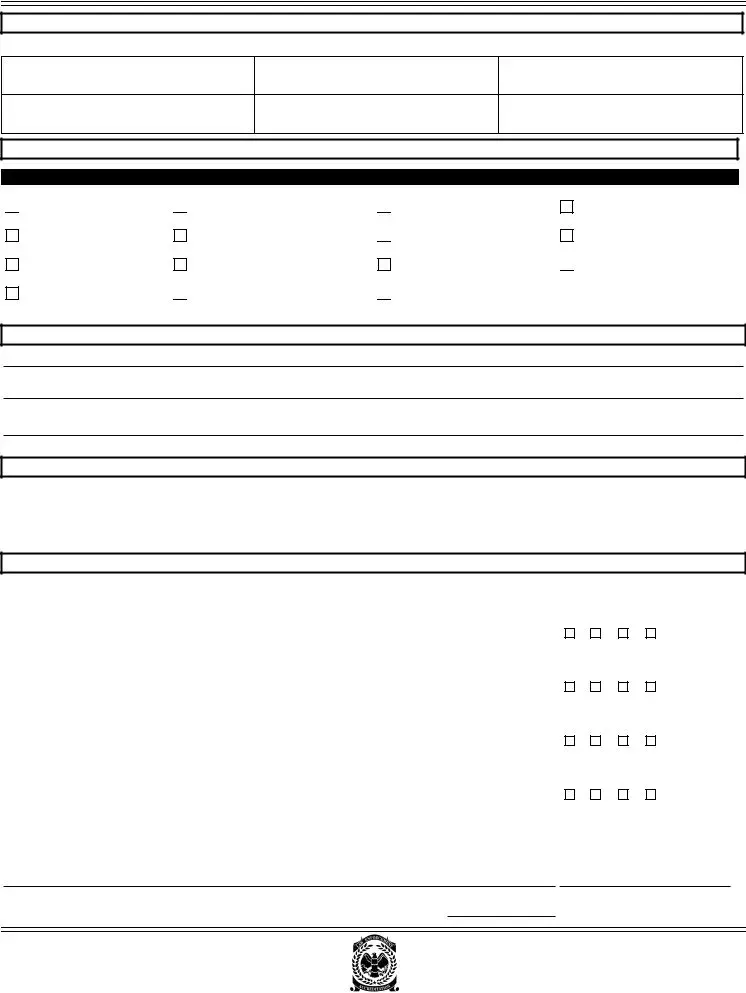FLEET MILEAGE IN CALIFORNIA: All mileage accumulated in California by vehicles identified in Part 4 during the most recent full calendar year, whether operated in intrastate or interstate service. For this purpose there is no need to separate intrastate mileage from total in-state mileage (some of which could be part of interstate trips), as it will be used by the CHP solely for safety regulation purposes.
PART 3. EMERGENCY CONTACTS: Enter the names of responsible individuals at the company-wide level of your organization whom the CHP should attempt to contact in the event of an emergency involving your organization's vehicles or drivers. These should be management or supervisory personnel, as they may receive information requiring confidential handling within your firm or organization. Do not include a telephone number if its use requires a Personal Identification Number or other access information, as the CHP's system has no means to store that additional information. Please notify your nearest MCSU (page 3) immediately of any permanent changes in personnel who are on-call for emergencies involving CHP-regulated commercial motor vehicles. Your organization can also designate two emergency contacts for each California terminal listed in Part 7 by notifying your local MCSU in writing. In doing so, identify two persons or offices with a day and night telephone number for each. Emergency circumstances may not always result in CHP using this source of information to contact your organization, but keeping this information current is strongly recommended. This is also a reason to ensure the identification numbers in Part 6 are accurate and complete, and represent your organization, not one to which you may be leased or contracted.
PART 4. TYPES OF OPERATION:
A.Truck - Any truck of three or more axles with a gross vehicle weight rating (GVWR) of more than 10,000 pounds; any truck tractor regardless of number of axles or GVWR; and any truck used to tow a trailer where the overall length of the truck and trailer coupled together exceeds 40 feet.
B.Hazardous Materials Carrier - Any truck, including pickups, used to transport any amount of hazardous materials.
C.Hazardous Materials Shipper - An individual or company who offers hazardous materials for transportation by common carrier, contract carrier, or motor carrier of property, and never transports hazardous materials in any amount on vehicles owned, rented, leased, or otherwise controlled or operated by the shipper.
D.Hazardous Waste Transporter - An individual or company that transports hazardous wastes as defined in California or federal regulations.
E.Flammable Liquid Cargo Tank - Any tank greater than 120 gallons capacity which is used to transport liquids having a flash point of less than 100 degrees Fahrenheit, other than in the regular fuel tank of the vehicle.
F.Bus Without Operating Authority - Any vehicle of more than ten passenger capacity including the driver; the operation of which does not require a certificate, permit, or authority issued by the California Public Utilities Commission (PUC), or the Federal Motor Carrier Safety Administration (FMSCA). This typically includes, but is not limited to, church or other private buses; and public transit buses operated by city or county transit agencies.
G.Tour Bus - Any bus subject to regulation of; and requires a certificate, permit, or authority issued by; the PUC or the FMSCA.
H.School Bus - The traditional yellow school bus specifically certified by the CHP for transportation of school pupils attending public or private schools.
I.School Pupil Activity Bus - A commercial or transit bus specifically certified by the CHP for use in transporting school pupils on school-sanctioned trips to or from school-related activities under specified conditions, but not including home-to-school or school-to-home route service.
J.Youth Bus - A small bus specifically certified by the CHP for service in transporting school pupils between school and non-school related activities.
K.General Public Paratransit Vehicle - A vehicle operated by or under contract to a transit agency in dial-a-ride, subscription, or route- deviated service; and certified specifically by the CHP for transportation of school pupils to and from schools.
L.Farm Labor Vehicle - A passenger vehicle or truck specifically certified by the CHP for use in transporting farm laborers.
M.Vehicle or combination described in Section 34500(k) VC - Any commercial motor vehicle with a GVWR of 26,001 or more pounds; or any combination of vehicles consisting of a commercial motor vehicle of any GVWR and a trailer with a gross weight or GVWR greater than 10,000 pounds ("Trailer" for this purpose does not include camp trailers, trailer coaches, or utility trailers).
N.Vehicle described in Section 34500(j) VC - Any other motor truck not described in A, B, D, E, or M above; the operation of which is subject to regulation by the DMV through the Motor Carrier of Property Permit requirements, the PUC, or United States Department of Transportation.
Safety, Service, and Security |
An Internationally Accredited Agency |



 Partnership
Partnership


 State or Local Government Agency
State or Local Government Agency


 Limited Liability Company (LLC) (Registered with the California Secretary of State)
Limited Liability Company (LLC) (Registered with the California Secretary of State)

 A. Truck
A. Truck
 E. Flammable Liquid Cargo Tank
E. Flammable Liquid Cargo Tank
 H. School Bus
H. School Bus
 I. School Pupil Activity Bus
I. School Pupil Activity Bus
 J. Youth Bus
J. Youth Bus
 L. Farm Labor Vehicle
L. Farm Labor Vehicle
 O. Modified Limousine
O. Modified Limousine

